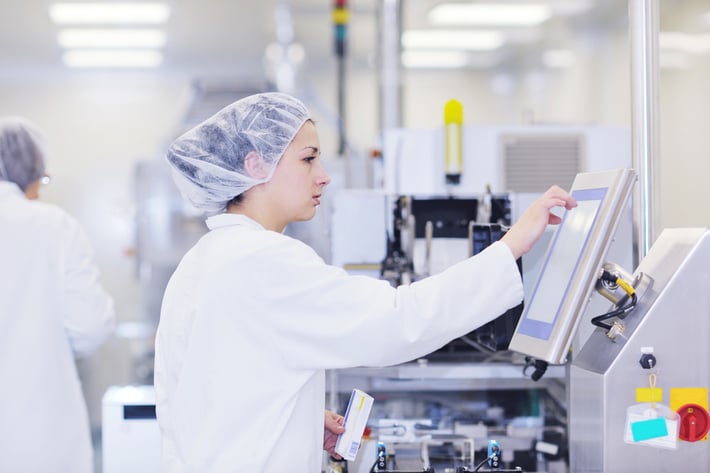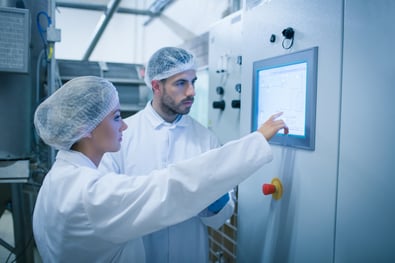
Still using display screen data for lab equipment record keeping? What you see might not be what you get.
On Display, In Disarray
You oversee a clinical lab or a pharmaceutical R&D facility or biotech business packed to the rafters with finely calibrated, wildly expensive, mission-critical laboratory equipment.
You need to make sure it’s always running at peak proficiency, that every heating and cooling unit is absolutely on-point – not one degree off – that every door is secure, that any and all maintenance you might have to do is proactive instead of reactive.
You have teams of scientists, doctors, researchers, and technicians working under extraordinarily tight deadlines on projects that can change human lives for the better (and make or break a business), projects entirely dependent on the equipment they use being flawless and their workspaces being pristine.
To protect that equipment and facility and ensure all components and workflows therein are optimal. You’ve installed myriad monitoring devices: sensors, data loggers, software, and more.
And you rely on technicians collecting system data off display screens and devices across the lab. Manually. One workstation and piece of equipment at a time. Which, after all the time, effort, and money spent on the facilities, the equipment, and the devices used to monitor it all, is akin to making a Wagyu steak and topping it off with Cool Whip.
Display screen info on monitoring systems: in the eyes of the beholder

The first thing that typically comes to mind when “manual labor” is mentioned is its liability as a cost center. Having someone manually check every piece of equipment takes time, and time = money.
But the major concern for an environment as exacting as a clinical lab or research facility is the accuracy of any and all information from every piece of equipment, and that’s where relying on manual collection methods is inherently risky.
Not only can a person easily misread the info on any given device or sensor, but the info they record can also be misread by whoever is collating and disseminating it.
One person’s handwritten 7 could look like another’s handwritten 4, a typo in the serial number or product name can essentially remove it from oversight, a tracking document can go missing… the opportunities for error are endless.
Sometimes “wrong” information is actually missing information. A cooling unit’s display screen may show that it’s running at a higher temperature, but tells you little or nothing about why it’s running at a higher temperature. Was it because the door was left open? Is it mechanical? Is it unique to that unit, or systemic?
And the errors aren’t always human errors, either. Sometimes, the display screen information outside a device doesn’t match what’s going on inside a device. You could open an incubator door, and the temp on the display screen outside that door will still be within an acceptable range, but inside, the temperature has dropped rapidly and, once the door closes, may rise rapidly as well. But the display screen isn’t telling you all of that. Or even half.
In such cases, half of the solution is collecting more data: more sensors, more software, more touchpoints. The other half is ensuring that data makes it into a centralized system where it’s easier to identify and address both patterns and anomalies.
Read more about Equipment Monitoring in our eBook: The Ultimate Guide to Lab Equipment Monitoring
One step at a time, ten steps behind
Collecting data off equipment display screens also means collecting it one piece of equipment at a time. If you’re running a small facility–one room, a couple of workstations, a few pieces of lab equipment–this is no big deal. You can probably get all the info you need inside an hour.
But if you’re overseeing a larger facility with hundreds of units and sensors collecting data in real-time, this is 1) obviously time-consuming and 2) absolutely ineffectual. Time-consuming needs no explanation: “ineffectual” is where the real concern is.
Because if you’re manually collecting real-time data from, say, 200 units or sensors, by the time you reach unit #200, the data collected from unit #1 is definitely no longer real-time and likely no longer relevant.
A clinical lab or research facility, and all the equipment therein, is in many ways an ecosystem with connections and dependencies across workspaces, rooms, machinery, and more. Gathering data one piece at a time will never give you the total oversight you need to ensure the purity and security of your laboratory environments.
The display need not be in play
If you’re still doing any kind of manual collection of critical data off display screens and other “on-device” components, it’s time, simply, to stop doing so and start using an automated solution to gather all data.
And it’s not just to address the issues we outlined above, though those are indeed critical. It’s also because, with an automated laboratory and equipment monitoring solution, the data collected is more quickly integrated into a centralized backend system where it can be analyzed and acted upon.
Instead of having a dozen technicians “in the field” collecting data from one display screen at a time, you can instead have one administrator viewing ALL data from ALL devices and sensors concurrently.
XiltriX can help implement a custom laboratory monitoring solution that will empower your organization with more complete, more current, and more actionable data from every workspace, every unit, every piece of equipment.
Say goodbye to dozens–or even hundreds–of display screens, and say hello to all the data you need in one pane of glass. Contact us to get started.
